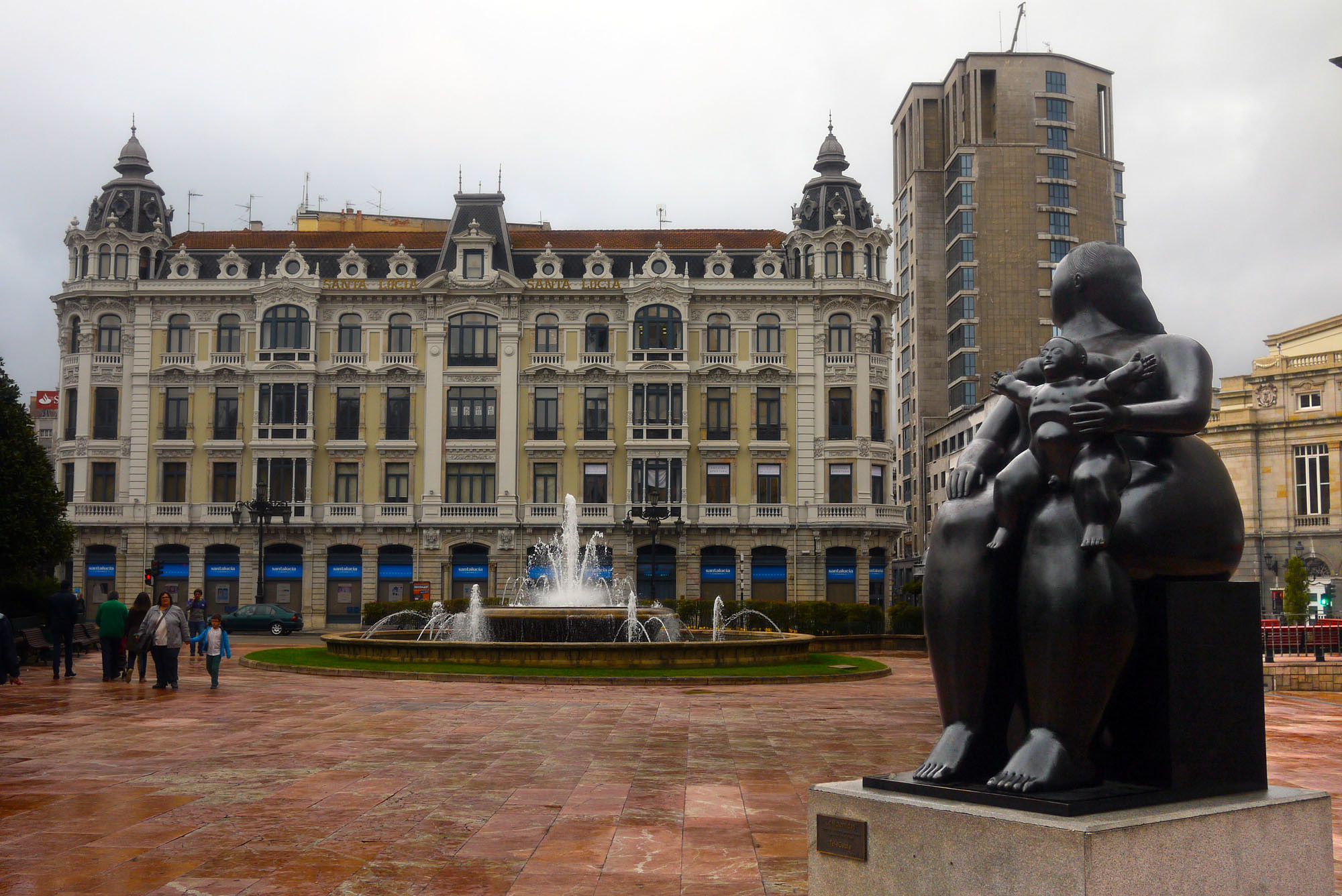Discover Asturias in 2 days
Located in the North of Spain, Asturias, fed by the landscape and natural wealth, of working class and flag for emblem. The province of Asturias, privileged tourist destination, allows you to enjoy its endless natural landscapes, enjoy a unique gastronomy and an extensive culture, From Visigoths to Napoleon's France. Víctor Manuel already said it, “Asturias, if I could, if i could sing to you…”
- San Lorenzo Beach
- Revillagigedo Palace and Collegiate Church of San Juan Bautista
- Jovellanos Birthplace Museum
- Praise of the Horizon
- Statue of Don Pelayo
- Church of Saint Peter the Apostle
- Roman Baths Museum
- Main Square
- The Labor
- Atlantic Botanical Garden
Our first day of the route will begin in GIJÓN, land with history, Visigothic Roman land, muslim, of kings or French, endless cultures that make Gijón one of the best Spanish cities.
To start our visit and not lose the day, We recommend stretching your legs soon and going to have breakfast at the "crème de la crème" of breakfasts in the city, the Cafe Europe.
just 10 minutes walking, while we go down to breakfast, we will begin the route taking as reference The beach of San Lorenzo (1). The promenade and its fresh air will be a plus while we walk, observing the beach of San Lorenzo until reaching the Escalerona. once here, we will enter the Cimadevilla neighborhood.
already inside the Barrio de Cimadevilla, historic fishermen's quarter, we will find several monuments, buildings and alleys that we should not miss.
The first thing we will look for in the unique streets will be the Revillagigedo Palace and the Collegiate Church of San Juan Bautista (2), next to the palace. The palace that is currently a Cultural Center of Cajastur, we can see temporary art exhibitions. once seen this, we will keep an eye on the Collegiate Church and its quadrangular tower with three levels and its baroque façade.
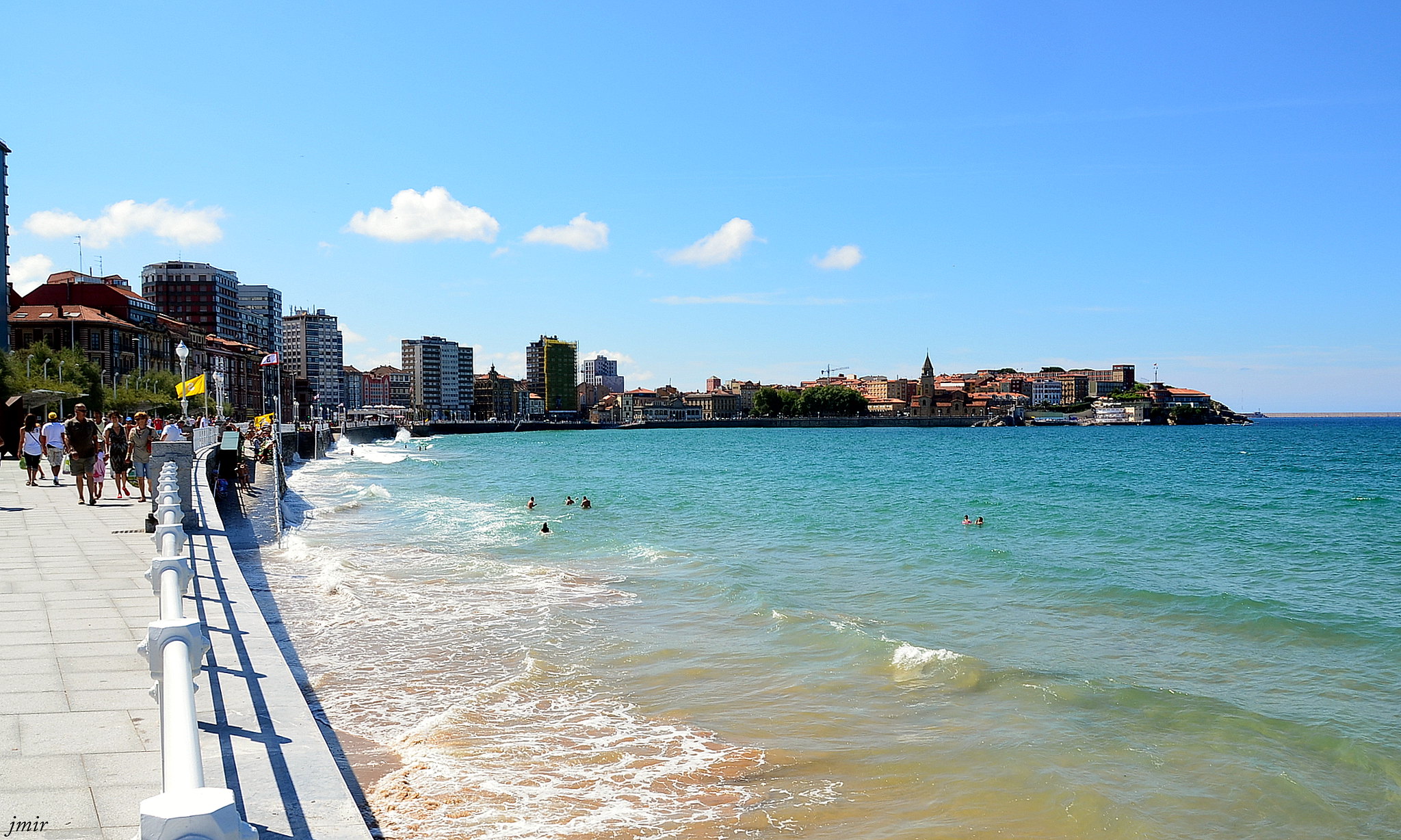
In a few minutes we will find the Jovellanos Birthplace Museum (3). The house of Gaspar Melchor de Jovellanos, one of the main exponents of the Spanish Enlightenment, It is located in a palace house built between the end of the 14th century and the beginning of the 16th century.. The building has undergone several reforms affecting its façade and internal layout until it, at the beginning of 1950, works began to adapt it to a museum.
We leave you optionally the entrance to the museum, although it is an opportunity to get to know Asturian art and its works.
To disconnect a bit from the museum and from so many buildings, we will enter the Santa Catalina Hill Park, It is located in the upper area of the Cimadevilla neighborhood and we will enjoy its views and its cliffs and of course, from the city. Here, definitely, we will visit the Praise of the Horizon (4).
Although in its origins it was highly criticized, It is one of the symbols of Gijón. We recommend standing inside and being able to capture an amplified sound of the sea breaking against the rocks.
In the park itself we can see remains of the walls, tunnels and bunkers, and the Santa Catalina Battery, area that was a military complex.
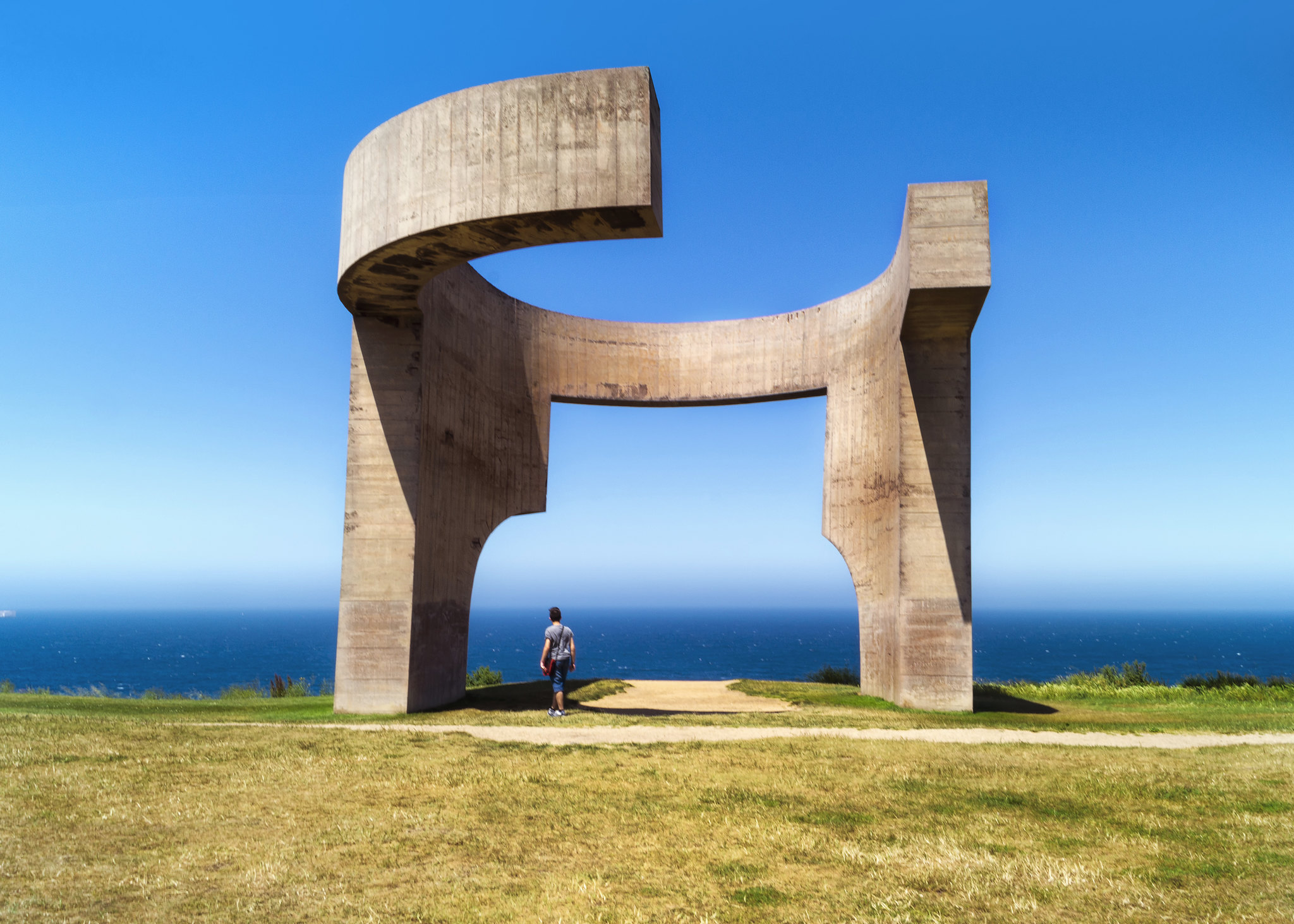
After a good photo session, We will return to the neighborhood to replenish energy. Our recommendation is to go to the Marquis Square and stop at Ferdinand House to eat a good Asturian cachopo at an affordable price and taste some ciders.
What's more, we can enjoy the views that it offers us, nothing more and nothing less than next to the Statue of Don Pelayo (5).
We will then turn to the Church of Saint Peter the Apostle (6). A church, new compared to the old neighborhood since it was rebuilt after the Civil War, although it is gothic in style, after its reform, They were inspired by the Asturian Romanesque and pre-Romanesque style. We can highlight its tower and atrium.
Right next to the church entrance, we see the Roman Baths Museum (7). Although the conservation of the baths is not remarkable, we can get an idea of how the construction was. This bath was discovered long before it was exposed to the public.. It is considered one of the most important deposits in the North of Spain..

To end our walk through the Cimadevilla neighborhood, and although we have passed a few times after going from place to place, we cannot say goodbye without stopping in the Main Square (8) and take the opportunity to make a mini break. The explanation of leaving the Plaza Mayor for last is simple, a cider after carrying several kilometers in the legs.
We also find the Town Hall of Gijón. The Plaza Mayor was designed in 1852 and the town hall was completed in 1867.
With its rectangular and cobbled plan and porticoed on two of its sides, It is considered one of the most beautiful and spacious spaces in the city center.
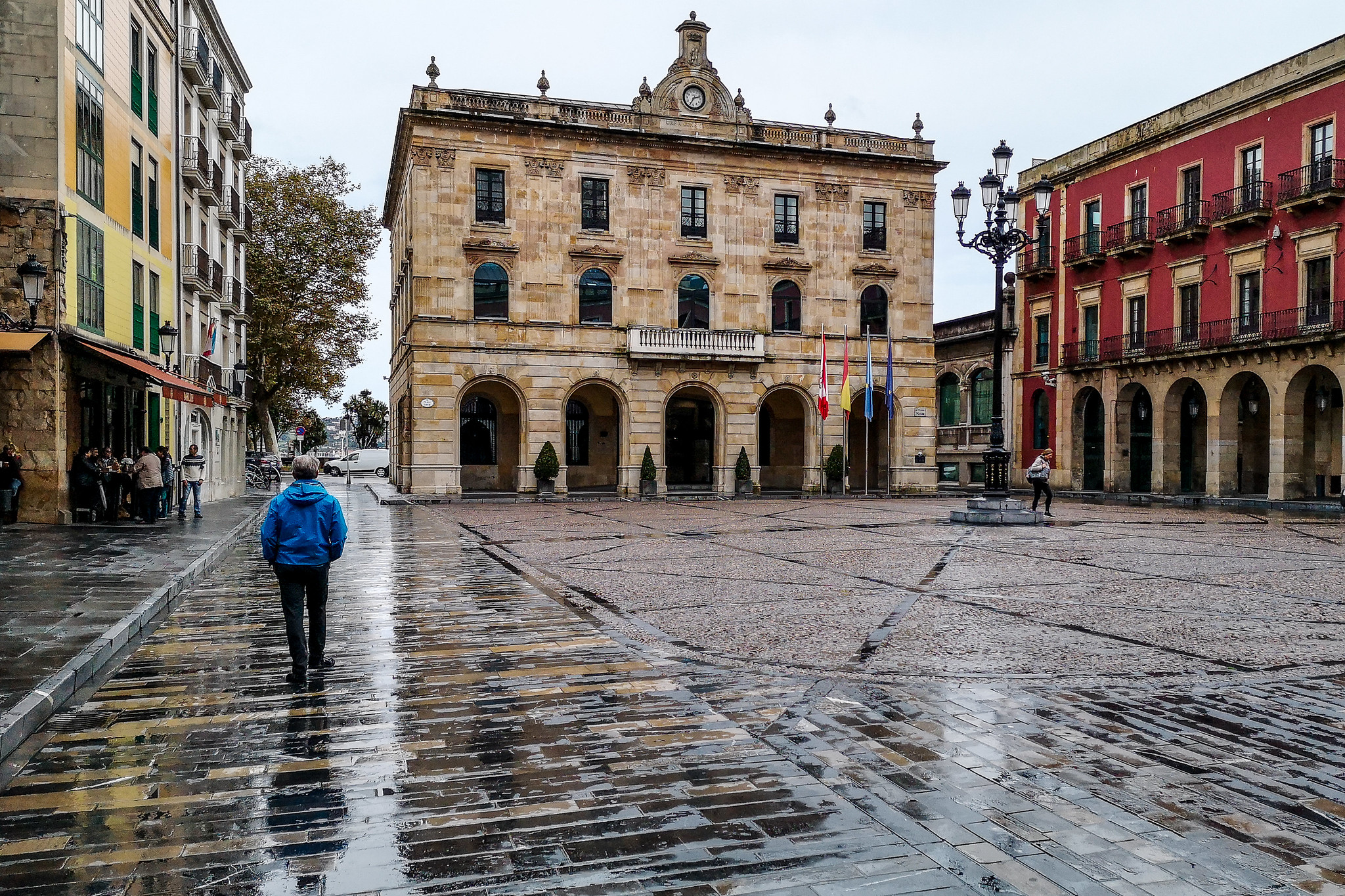
To end our route in Gijón, We propose them 2 alternatives since we will need some means of transport (you can get there by bus) to get to this area farthest from the city, or if you have time, both, since it is a few minutes
First of all, and more than mandatory, The Labor (9). It is the largest building in Spain and was built between 1946 y 1956 in order to train the children of orphaned miners. Subsequently, it began to be designed to be a University.
It is currently the headquarters of Laboral Ciudad de la Cultura where institutions such as the Faculty of Commerce are concentrated, Tourism and Social Sciences or the Superior School of Dramatic Art of Asturias and the Conservatory of Music.
The other alternative or the route to follow is the Atlantic Botanical Garden (10). Vegetation lovers will find more than 30.000 plants of 2.500 different species. There are different explanatory supports for the interpretation of the contents in the tour, that make this botanical garden a unique and singular space.
What's more, It is the only Botanical Garden in the northwest of the Peninsula.
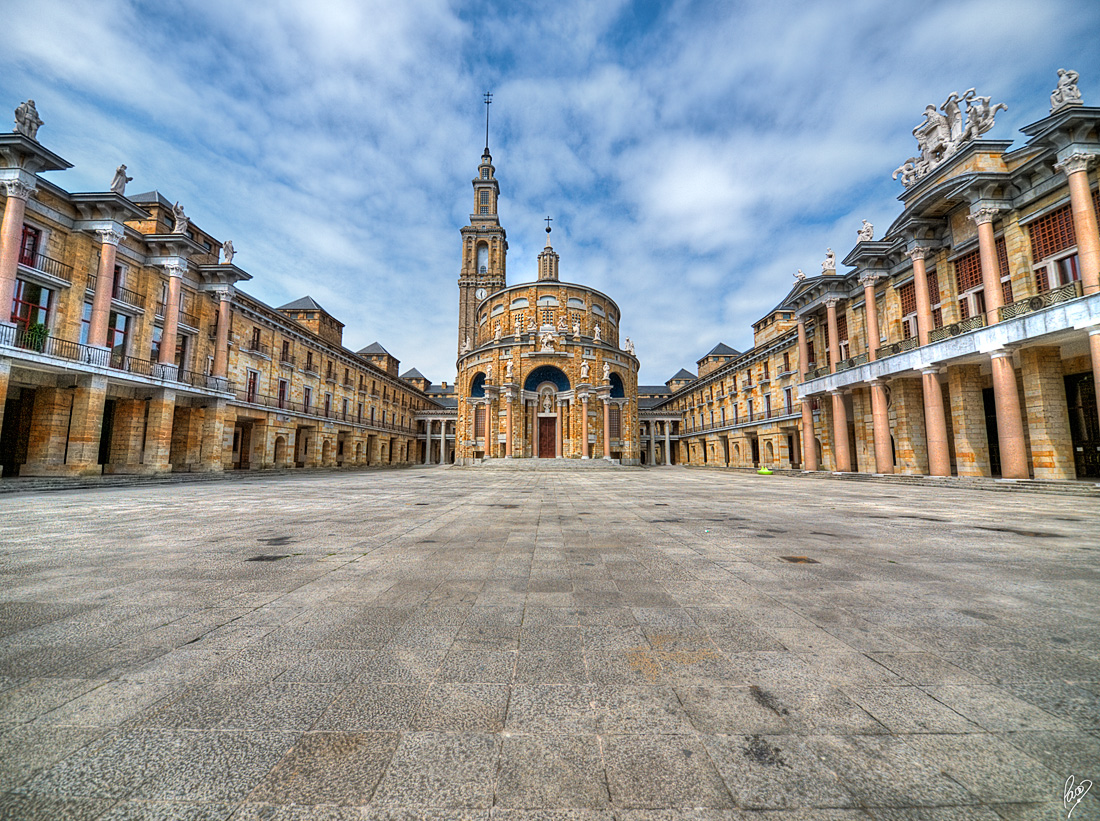
- The Cathedral of San Salvador
- Museum of Fine Arts of Asturias
- Archeological Museum
- Constitution Plaza
- Market and Plaza of El Fontán
- Trascorrales Square
- Oviedo University
- Scandalera Square
- Campoamor Theater
- Santa Maria de Naranco
- San Miguel de Lillo
Today it's time to get up a little earlier and take the car to OVIEDO, it is only 32 km. If you prefer it exists, the possibility of going by bus with very continuous routes and from 6.30 until 22.30 (more information here).
If we take the option of having breakfast once we arrive in Oviedo, no better place than “Dos de Azúcar Bakery”, right next to the Cathedral.
freshly charged batteries (o no), we will start the route through Oviedo from The Cathedral of San Salvador (1). It would be advisable to access and visit its famous and spectacular Holy Chamber and contemplate the Victoria Cross or La Cruz de los Ángeles.
We will walk through the Santa Ana Street, and we will meet him Museum of Fine Arts of Asturias (2), most important museum and that occupies nothing more and nothing less than 3 buildings. if we decide to enter, mandatory, we will contemplate works by Zurbarán, Dalí and Goya among others.
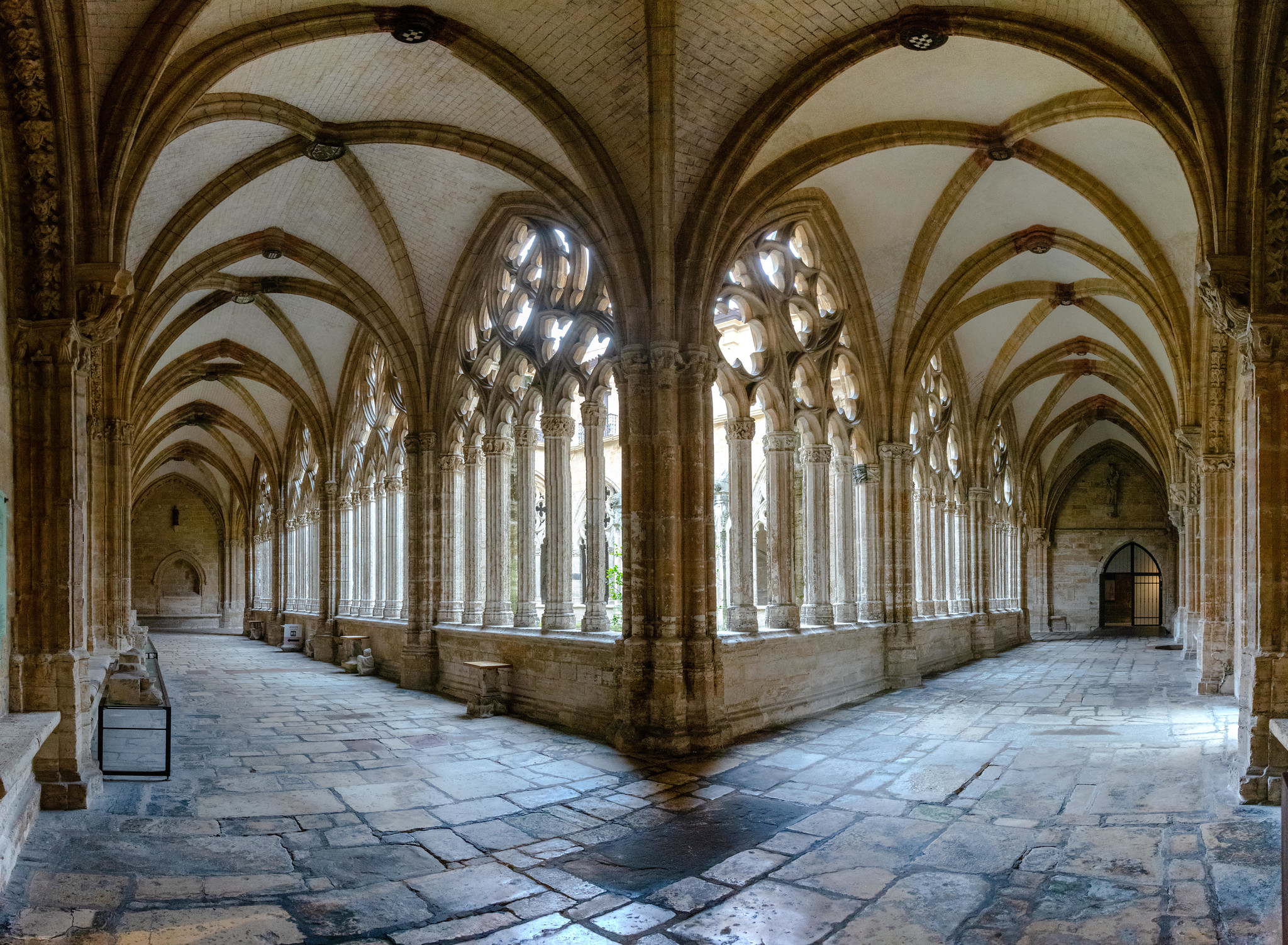
The next visit will be another museum, he Archeological Museum (3). Installed in the old Benedicto de San Vicente Monastery from the 16th century, presents several collections from Prehistory to medieval times.
We will go to the Constitution Plaza (4) and next to him, Oviedo City Hall. It is believed that it was built on the old city wall. A few minutes away we will find a very busy area such as the Market and Plaza de El Fontán (5). We will be able to enter the Market and see all the activity and buy some other detail or simply enjoy the gastronomy. It was built on a Jesuit college at the end of the 19th century.. The next stop is worth photographing, and is that we will go to the Trascorrales Square (6). A picturesque space and where we will find the famous statue of La Burra, The Milkmaid and the Fish Seller and the Fishwoman.
once visited, We will go up Calle San Vicente and we will see the Oviedo University (7) and we will make a small break in the Cider Shop The Corner of Gascona, just 4 minutes walking.
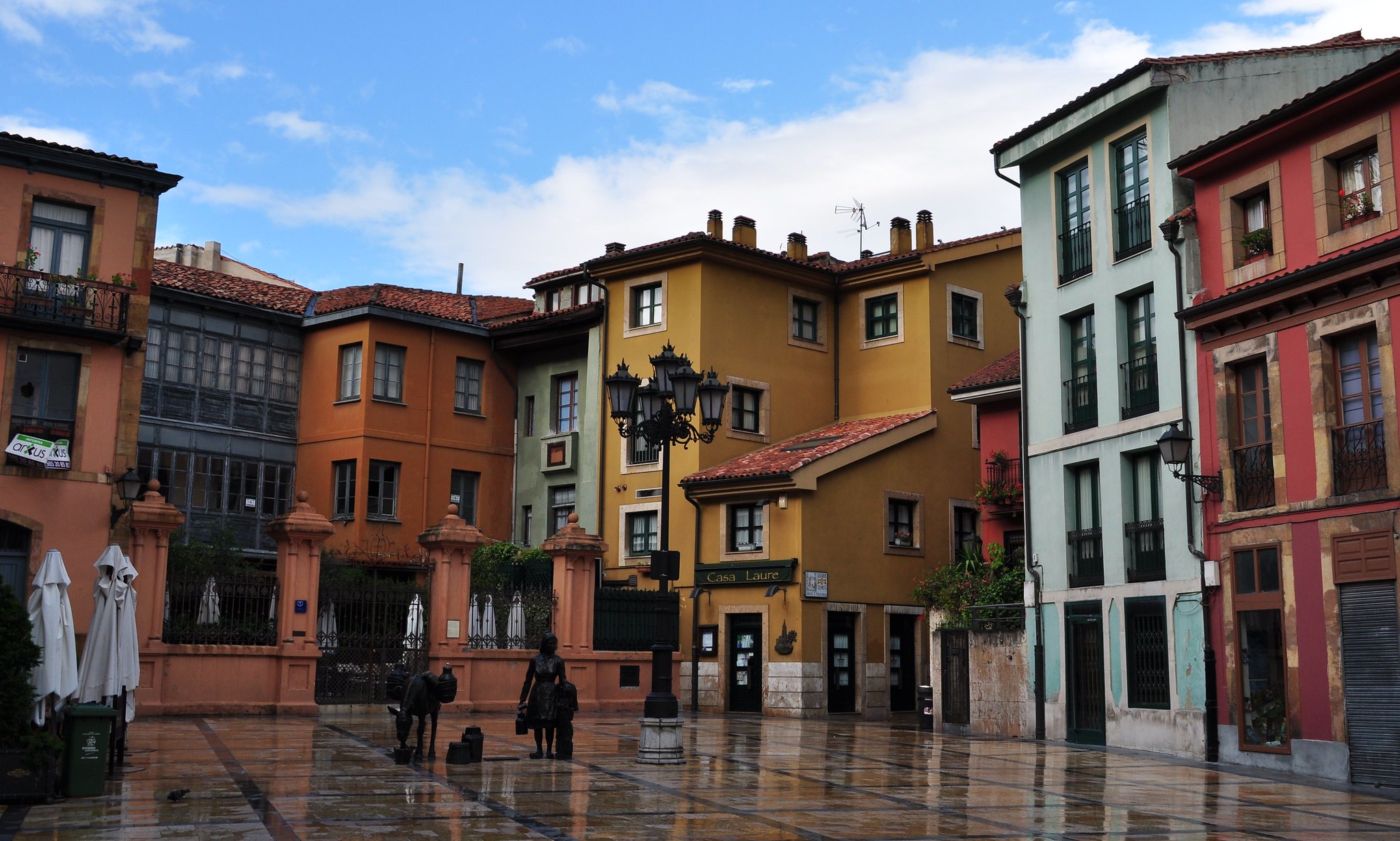
We will walk again to Calle Jovellanos and a few 5 minutes with we will meet the Scandalera Square (8), place where the ceremony of the Princess of Asturias Awards is held, the Caja de Asturias or the Thermometer Building; and next to her, the great famous Campoamor Theater (9). We find ourselves in a fairly commercial area with a lot of traffic, therefore, if we want to end the route, we can not be too distracted.
The next destination we will walk 30 minutes, but it's worth it, we will go to the Mount Naranco the churches of Santa Maria de Naranco (10) and of San Miguel de Lillo (11). Both Pre-Romanesque constructions and with views of Oviedo where we can enjoy incredible views and a nature area.
For greater enjoyment of the area, we could calculate the sunset time to end our route here and say goodbye to Oviedo with one of the greatest pleasures in the visual world.
